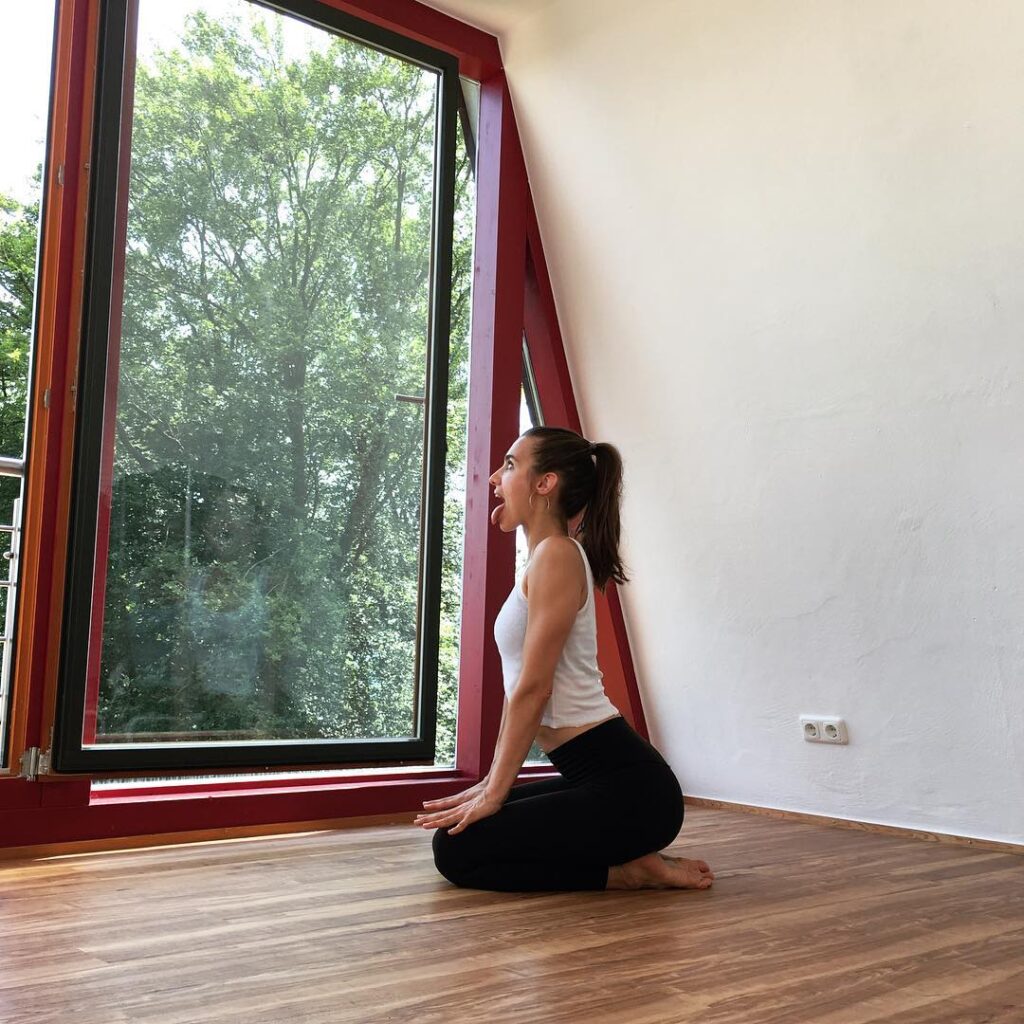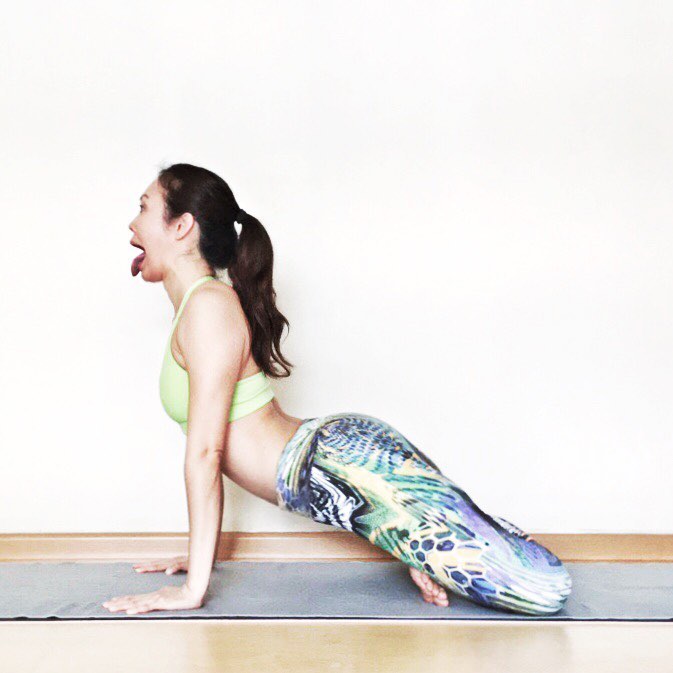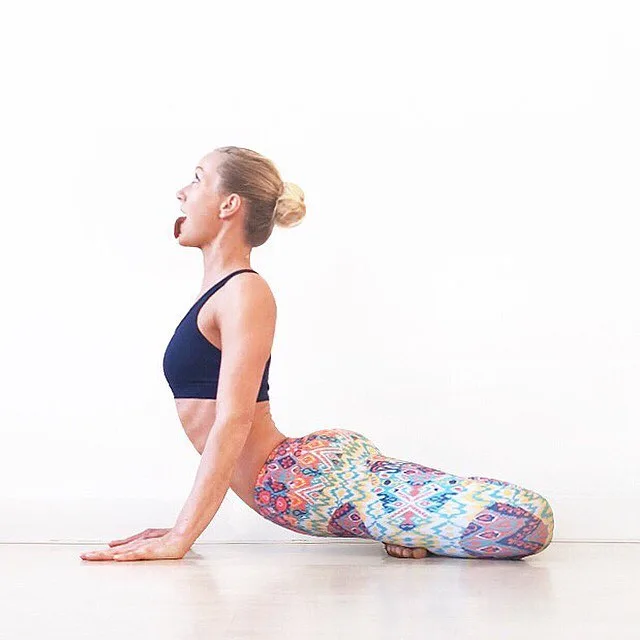Simhasana, also known as Lion Pose, exercises the liver and controls the flow of bile. The pose requires the practitioner to produce a roaring sound.
Experts believe that regular practice of this pose cures foul breath, the tongue becomes clear and words are enunciated more clear. Therefore, people who have stammer are recommended this yoga pose. It also helps in mastering three Bandhas. Asana gives relief from a painful coccyx and helps to set it up if displaced. It also helps in reducing stress and frustration. It also helps in reducing stress and frustration.
In this yoga asana includes exercising the muscles of the face. It is beneficial in removing wrinkles and tightening the facial skin. It improves the circulation of the blood that it encounters and gives it a rejuvenating effect.
There is a scientific study which proves that adding Lion Pose to your routine helps in delaying the aging process.
Information
| Known as: | Simhasana, Lion Pose |
| Sanskrit name: | सिंहासन |
| IAST: | Siṁhāsana |
| Pronunciation: | sim-HAHS-anna |
| Level: | Beginner/Intermediate |
| Type: | Sitting, backbend |
| Total time: | 30 seconds |
| Drishti: | Forward; Upward; Between the eyebrows; At the tip of the nose |
| Chakra: | Sahasrara Chakra, Ajna Chakra |
| Focus: | Spine, wrists, quadriceps, and knees |
| Indications: | Coccyx, bad breath, respiratory infections, soothing effects to eyes, ears, nose, throat, and mouth; teeth grinding or clenching, stuttering, vocal tone |
| Counterpose: | Balasana (Child’s Pose) |
| Preparatory poses: | Dandasana, Hero Pose, Supta Virasana, Easy Pose |
| Follow-up poses: | Ustrasana, Child’s Pose, Ardha Mandalasana |
| Contraindications: | Temporomandibular joint syndrome (TMJ), ankle or knee injury (perform while sitting on a chair), asthma, glaucoma |
Meaning + Origin
The Simhasana is derived from the Sanskrit name, which is made up of two words — Simha + asana:
- “Simha” = “lion”
- “asana” = “pose or posture”
Simhasana is dedicated to Narasimha (Nara + Simha), the Man-Lion Incarnation of Vishnu:
- “Nara” = “man”
- “Simha” = “lion”
It is related that the demon king Hiranyakashipu (an Asura and king of the daityas) received a boon from Brahma to ensure that he would not be killed by God, man or animal, whether in the day or night, inside or outside his house, on land or water. Then the demon king persecuted both Gods and Men, including his pious son Prahlada, who was an ardent devotee of Vishnu. Prahlada was subjected to a variety of cruelties and temptations, but remained unblemished on the side of Vishnu and preached with greater faith and strength the omnipresence, omnipresence and omnipotence of Lord Vishnu.
Enraged, Hiranyakashipu asked his son that if Vishnu is omnipresent, why could he not see him in the pillar of the hall of his palace. The demon king contemptuously kicked the pillar to convince his son of the absurdity of his faith. When Prahlada called on Vishnu for help, the Lord burst from the pillar in a frightened form, the upper half being a lion and the lower half a man. It was evening when there was neither day nor night. The Lord lifted Hiranyakashipu into the air, seated himself on the threshold, placed the demon king on his thigh and cut him to pieces.
The Narasimha avatar is often depicted in Indian sculpture and one such powerful group can be seen in the Ellora caves.
Benefits of Simhasana (Lion Pose)
Lion Pose (Simhasana) can dissipate any tension you may have built up in your chest and face while activating the neck muscles in front of you. The muscles in the front of your throat are the ones that loosen up as you age; So lion can actually slow down the ageing process. There are anecdotal reports of lion stammers resolving the condition, although no direct research evidence supports this. Although, it is credited with strengthening the voice.
However, physical and mental benefits of this yoga pose are listed below:
- Physical Benefits:
- Increases circulation to the eyes and throat
- Clears nasal and ear passages
- Relieves jaw tension
- Improves blood flow to the brain
- Exercises the facial muscles
- Relieves dry or sore throats
- Increases lung capacity
- Helps relieve sinusitis
- Mental Benefits:
- Reduces stress
- Relieves mild depression
- Relieves anxiety
Simhasana (Lion Pose) Practice Guide
There are two forms of the Simhasana. Simhasana I (Lion Pose I), described in the instructions below, follows step-by-step, while the second variation, which is more difficult to perform but which has a more advantages, is described later in the instructions, follow step-by-step, as in Simhasana II (Lion Pose II).
Simhasana I (Lion Pose I)

Instructions:
- To start, sit on the floor, legs extended straight in front of you.
- Lift the seat, bend your right knee and place the right foot under your left buttock. Then bend your left knee and place the left foot under your right buttock. Your left ankle should be placed under your right ankle.
- Sit on your heels with your toes pointed back.
- Then bring the weight of your body on your thighs and knees.
- Stretch your torso forward and keep your back straight.
- Place your right palm on your right knee and your left palm on your left knee. Extend your arms straight and keep them rigid. Spread your fingers and press them to the knees.
- Open your jaws wide and spread your tongue as far as possible towards your chin.
- Gaze (drishti) between your eyebrows or at the tip of your nose. Stay in the pose for about 30 seconds, breathing through your mouth.
- Pull your tongue into the mouth, raise your hands from your knees and straighten your legs. Then repeat this pose, first placing your left foot under your right buttock and then your right foot under your left buttock.
- Stay in the pose on both sides for equal time.
Simhasana II (Lion Pose II)

Instructions:
- To start, sit in Padmasana (Lotus Pose).
- Extend your arms in front and place your palms on floor, your fingers pointing forward.
- Stand on your knees and then push your pelvic area towards the floor.
- Stretch your back by fully extending your arms, contracting your buttocks. The weight of your body rests only on your palms and knees. Open your mouth and pull your tongue towards your chin as much as possible.
- Gaze (drishti) between your eyebrows or the tip of your nose and maintain this pose for about 30 seconds. Breathe through your mouth.
- Sit in Padmasana (Lotus Pose) and lift your hands off the floor. Then switch the position of your legs, do Padmasana (Lotus Pose) again and repeat the pose for the same duration.
Precautions and contraindications
- If your wrist is weak then sit in Thunderbolt Pose and do the throne posture, do not keep your hands on the floor.
- Do not practice this yoga asana for more than three minutes.
- Never practice Lion Pose with a broken or injured ankle or knee (should be done while sitting on a chair).
- Avoid doing this yoga asana with injury to the face, neck or tongue.















